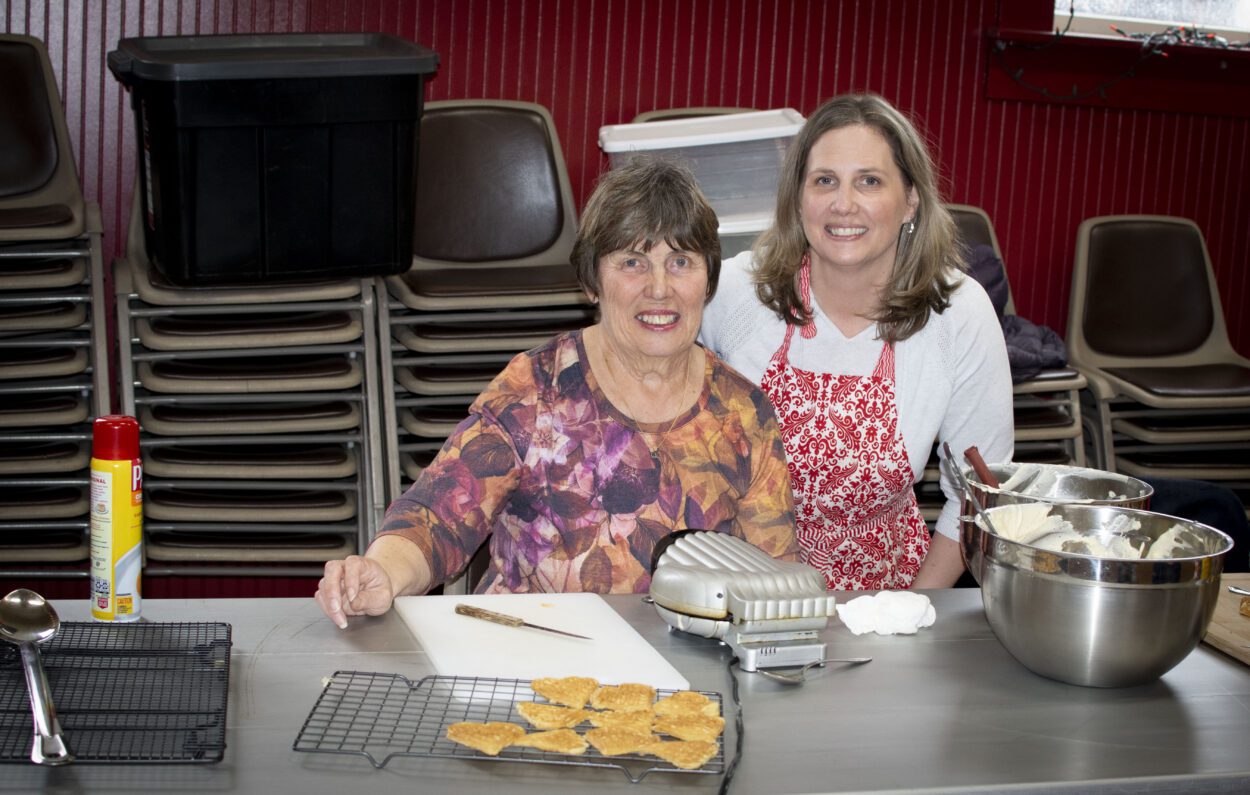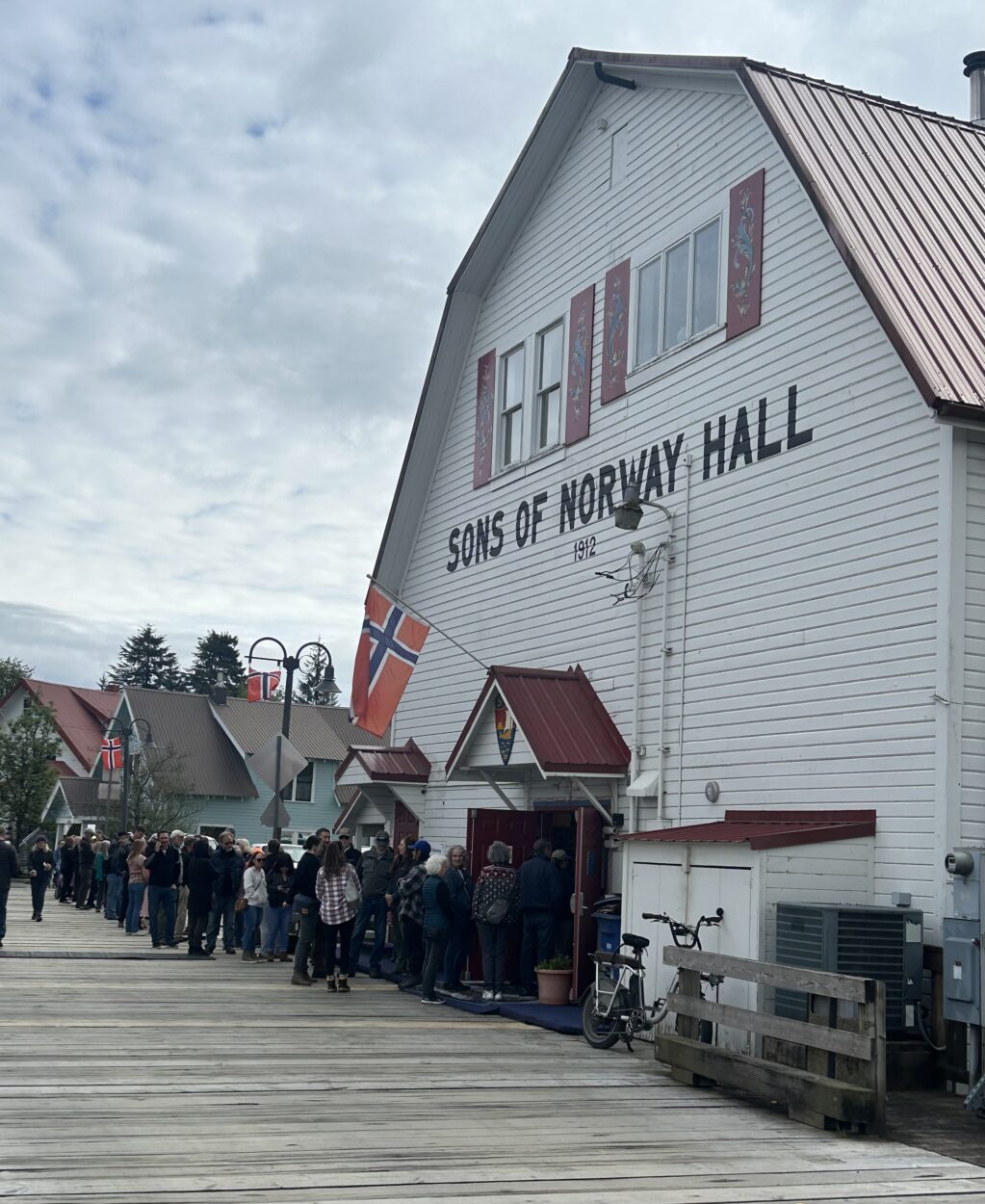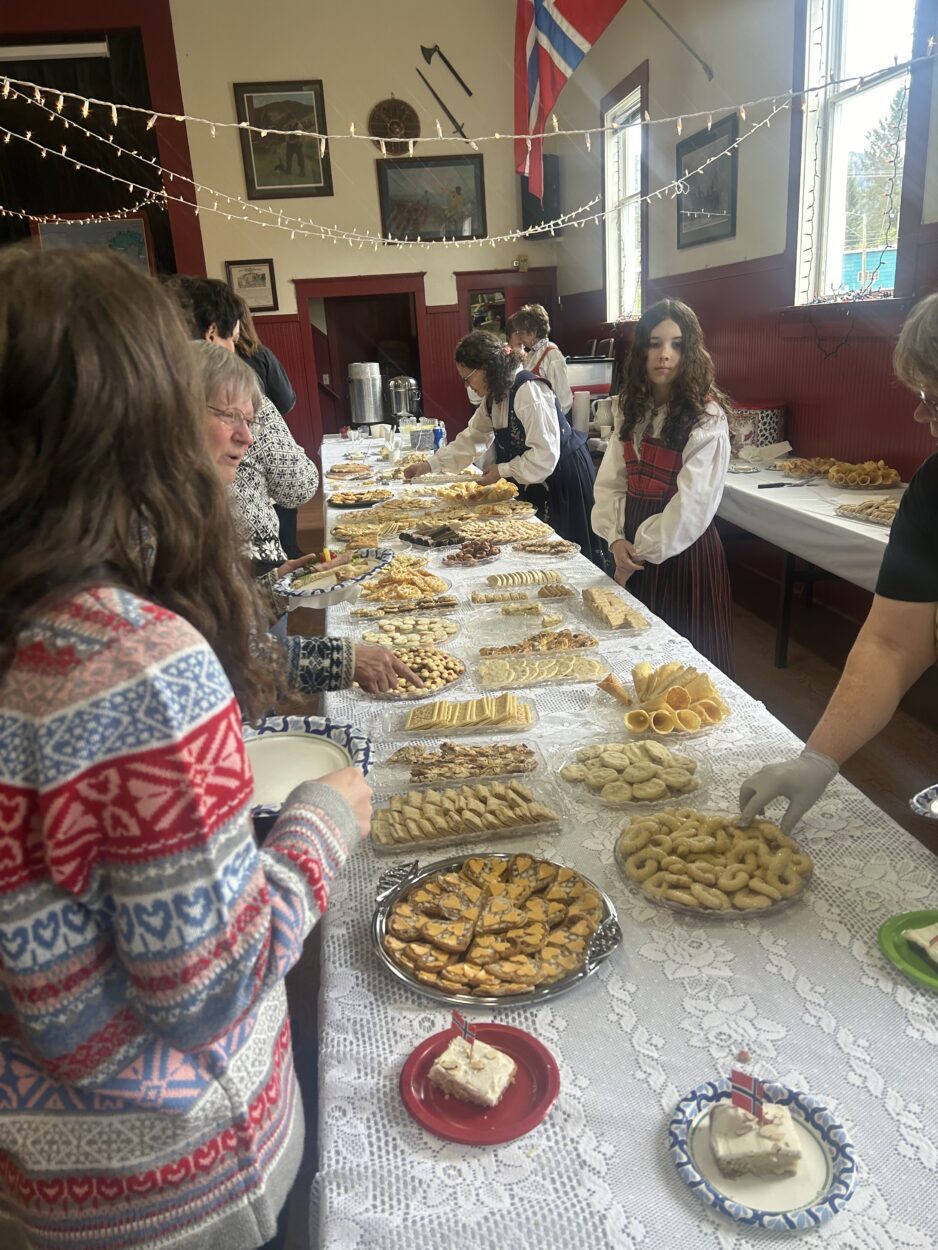
(Photo by Shelby Herbert, KFSK)
Alaska’s Little Norway celebrated Norwegian Constitution Day in mid-May with a week-long festival. For some families in the community, that meant many hours spent cooking heaps of treats from the Old Country, often using recipes that have been passed down for generations.
The air inside Petersburg’s Sons of Norway Hall is thick with the smell of cardamom, vanilla, and melted butter. Volunteers labor over portable stoves and bowls of batter. Sally Dwyer is the director of Petersburg’s Sons of Norway chapter, and she’s the mastermind behind this cooking operation.
After directing the volunteers to their stations, Dwyer fires up her griddle. A few moments pass, and she hands the reporter delicate, cone-shaped waffle cookie — something called a krumkake. And it melts in your mouth just as fast as it disintegrates in your hands. As the crumbs fall away, Dwyer demonstrates her krumkake system.
“I am pouring approximately a tablespoon of krumkake batter into the krumkake iron, which has beautiful imprints of flowers and scroll-ey thingies. I want it to spread out and be crispy, then I’ll put them on my roller and roll them into the cone shape, and then set them here to rest while making the next one.
She’ll have to repeat that process hundreds of times today. All the volunteers here are making heaps of traditional treats to raise money for Petersburg’s Sons of Norway chapter at an annual buffet-style bake sale, called “Kaffehus.”
In another corner of the room, Margaret Newlun is making rosettes. Which is a little more involved — and dangerous. Wikan wields a long, thin metal rod with a flower-shaped cookie cutter at the end. She dips the cookie cutter into a bowl of batter, and then turns around to face a ripping hot pan of oil.
“It just takes a while to make ‘em,” said Newlun. “You gotta fry ‘em in oil and you can’t set [the rod] down in the oil, because it’ll ruin the cookie!”
At another table, Katrina Miller is making waffler with her mom — that’s basically a tiny waffle sandwich. Miller’s grandmother taught her how to make it. Miller says waffler is an all-occasion thing that the next generation of her family has bonded over.
“It’s just kind of always been our thing and it brings us all together,” said Miller. “And it’s fun! We do it for Christmas, we do weddings, funerals… And then, sometimes, just because we want waffler.”
Miller’s mom, Sharon Wikan, feeds me a piece of waffler smeared with a type of caramelized goat cheese, called gjetost. Wikan says that’s the best way to eat waffler… But not everybody in her family agrees.
“These are my grandkids’ favorite,” said Wikan. “But they don’t like the goat cheese. My kids don’t like the goat cheese. Just grandma — nobody else does.”
After hours of work, the volunteers’ tables are piled high with dozens upon dozens of pastries, which they start squirreling away for Kaffehus.
Days later, the dainty desserts reappear in the Sons of Norway Hall, arranged on long buffet tables. A line of hungry festival-goers stretches around the outside o f the building, and they’re getting rained on. But Bob Martin, who has been standing there for around 45 minutes, says it’s all worth it.

(Photo by Shelby Herbert/KFSK)
“Lefse! It’s hard to find these days,” said Martin. “The ladies wearing bunads — they know the secrets!”
Lefse is one of the big draws here — it’s a soft flatbread often filled with butter, sugar, and spices. It’s classic Scandinavian fare, but there’s been some drift over the years. Here, it’s taken on some American flavor.
Dwyer says her family’s lefse is a great example of how the town’s Norwegian forebears came up with new ideas after they started their lives in Petersburg.
“According to [our] family legend, grandma Tora put sugar in her lefse after she buttered it, she used powdered sugar for the first time in Petersburg,” said Dwyer. “The granulated sugar — most of us think it’s like sand! So, most of us here use powdered sugar. Women were innovators back then!”
But the day’s visitors aren’t here to quibble over authenticity. They’re here for the sugar rush. Plates of lefse — filled with both granulated and powdered sugar — along with all the other fruits of the volunteers’ labor are wolfed down. And that’s another successful Kaffehus in the books.

(Photo by Shelby Herbert/KFSK)











